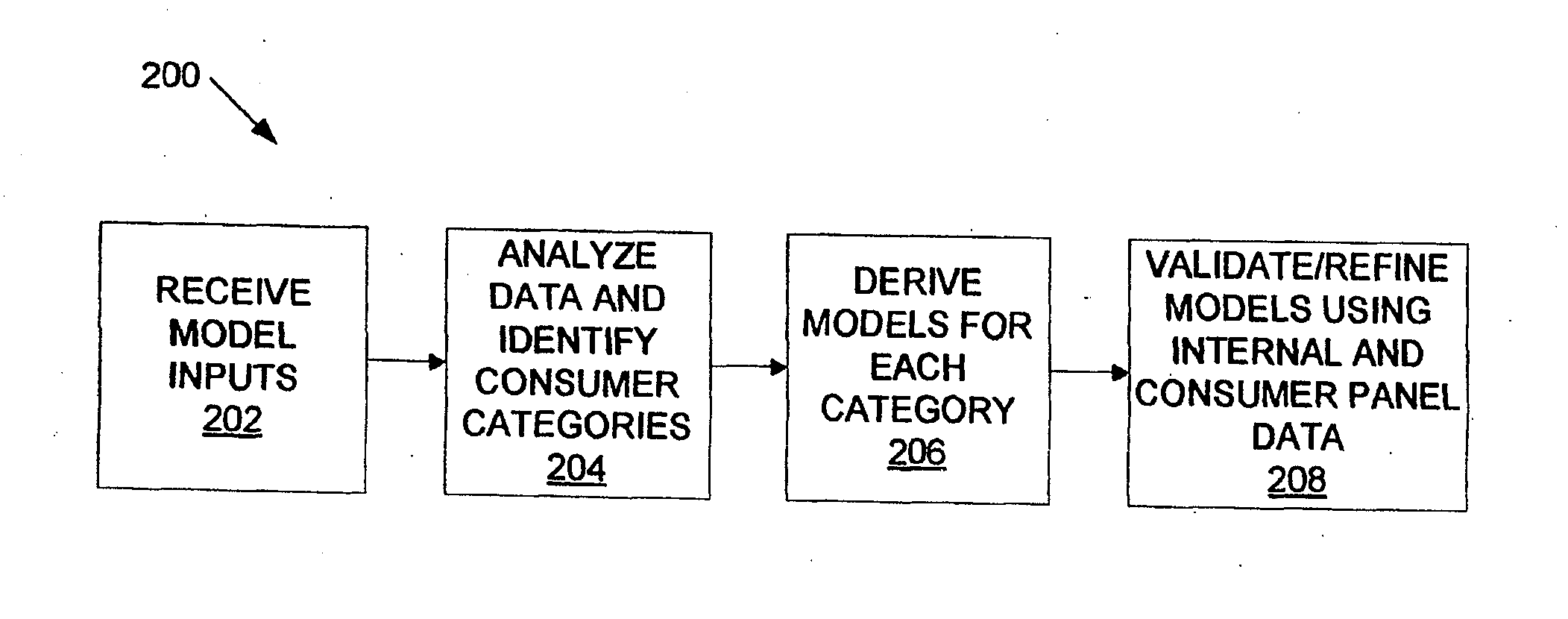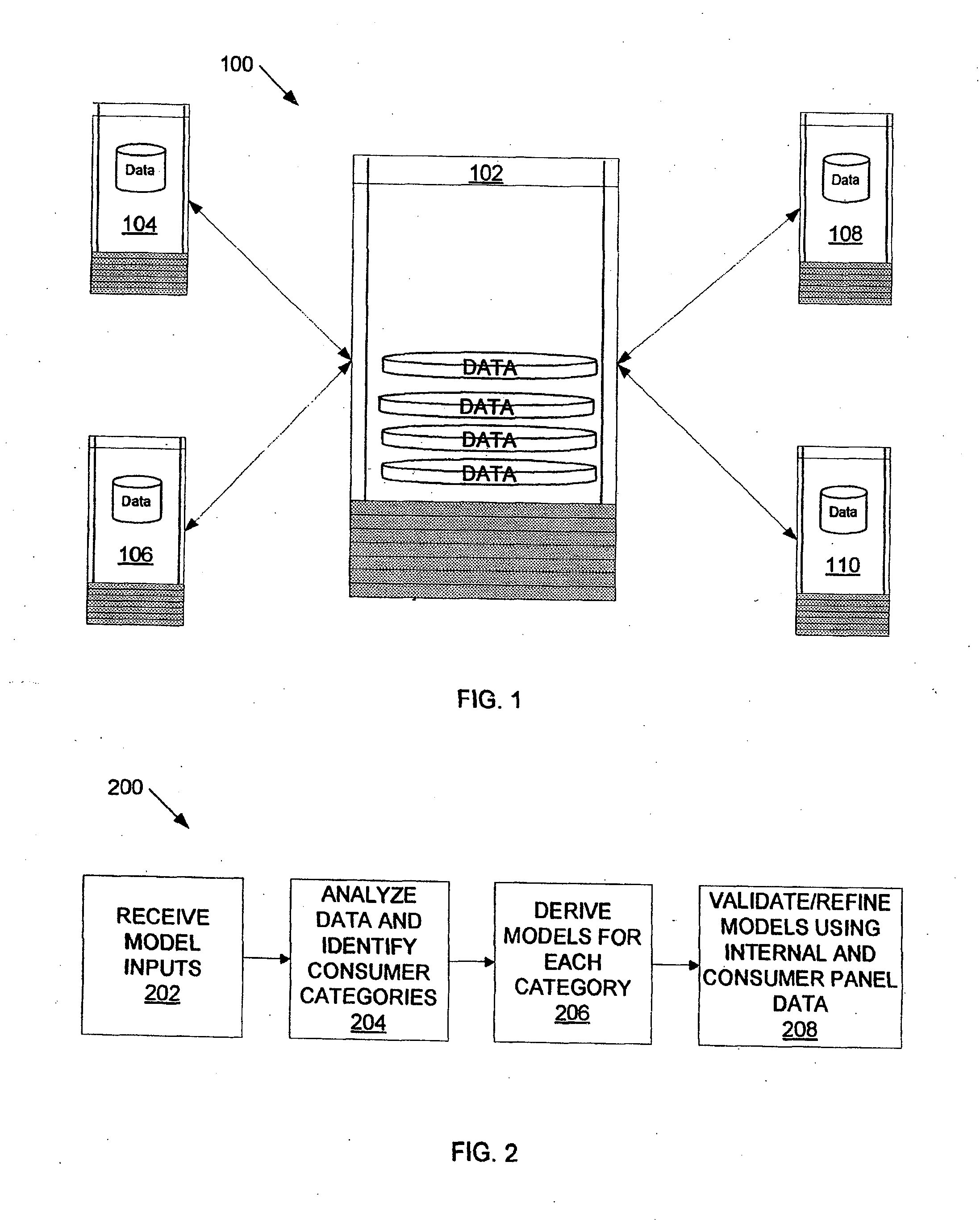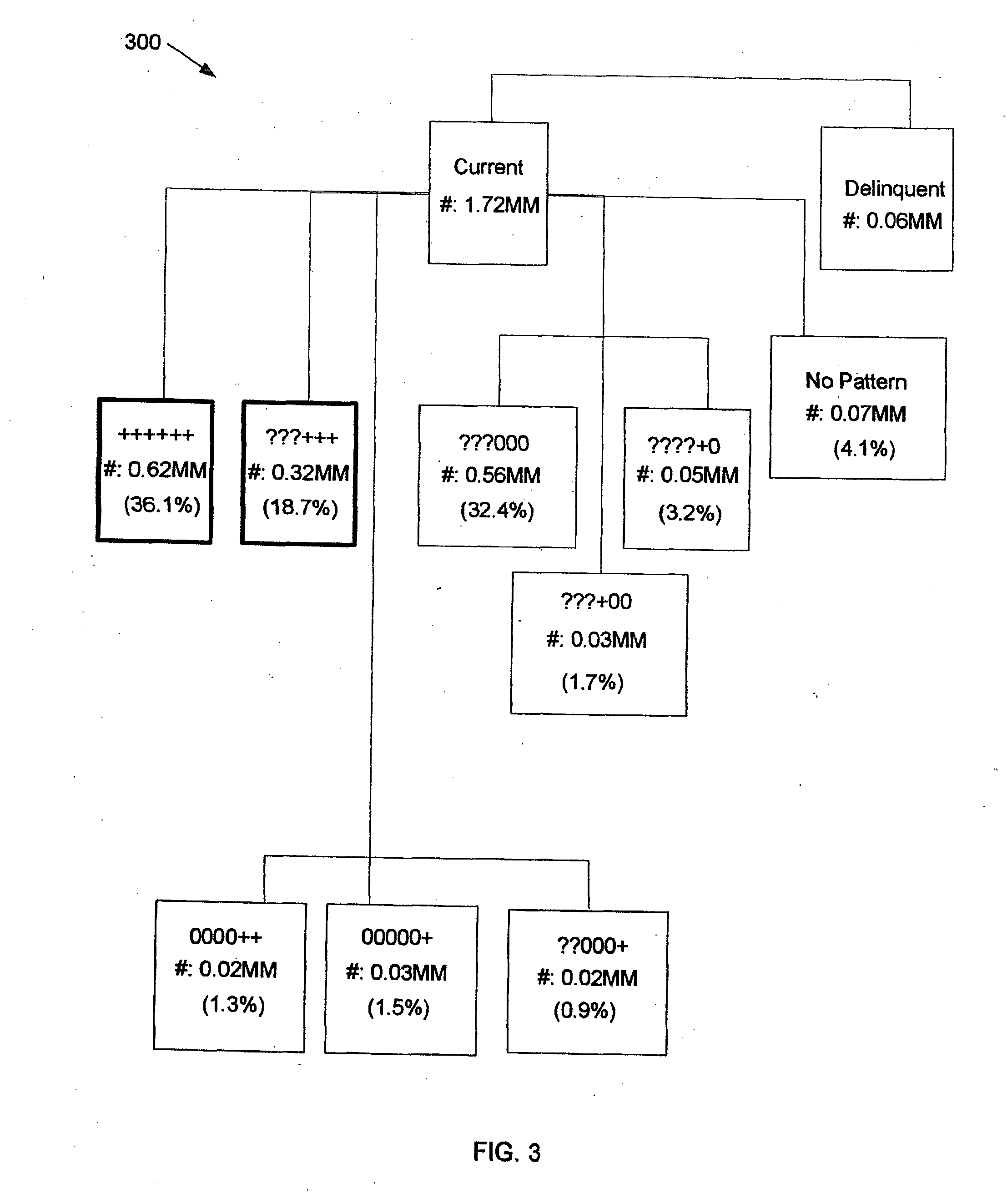Computer-Based Modeling of Spending Behaviors of Entities
a computer-based modeling and entity technology, applied in the field of financial data processing, can solve the problems of limited ability to estimate consumer spend behavior, axiomatic that consumers will tend to spend more, and difficulty in confirming whether the lowered balance is the result of a balance transfer to another account, so as to improve profitability, accurate utilization of balance data, and effectively manage customer relationships
- Summary
- Abstract
- Description
- Claims
- Application Information
AI Technical Summary
Benefits of technology
Problems solved by technology
Method used
Image
Examples
Embodiment Construction
[0026]As used herein, the following terms shall have the following meanings. A trade or tradeline refers to a credit or charge vehicle issued to an individual customer by a credit grantor. Types of tradelines include bank loans, credit card accounts, retail cards, personal lines of credit and car loans / leases. For purposes herein, use of the term credit card shall be construed to include charge cards, except as specifically noted. Tradeline data describes the customer's account status and activity, including, for example, names of companies where the customer has accounts, dates such accounts were opened, credit limits, types of accounts, balances over a period of time, and summary of payment histories. Tradeline data is generally available for the vast majority of actual consumers. Tradeline data, however, does not include individual transaction data, which is largely unavailable because of consumer privacy protections. Tradeline data may be used to determine both individual and ag...
PUM
 Login to View More
Login to View More Abstract
Description
Claims
Application Information
 Login to View More
Login to View More - R&D
- Intellectual Property
- Life Sciences
- Materials
- Tech Scout
- Unparalleled Data Quality
- Higher Quality Content
- 60% Fewer Hallucinations
Browse by: Latest US Patents, China's latest patents, Technical Efficacy Thesaurus, Application Domain, Technology Topic, Popular Technical Reports.
© 2025 PatSnap. All rights reserved.Legal|Privacy policy|Modern Slavery Act Transparency Statement|Sitemap|About US| Contact US: help@patsnap.com



